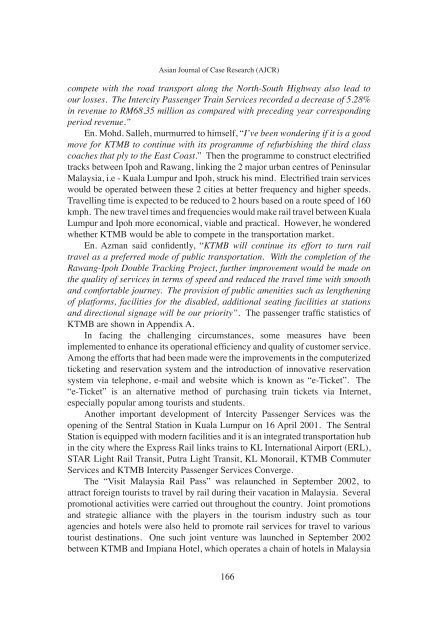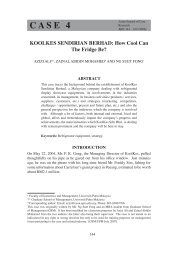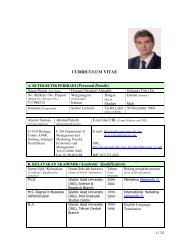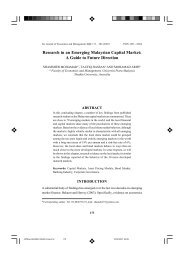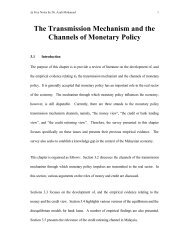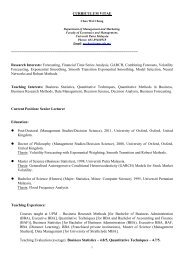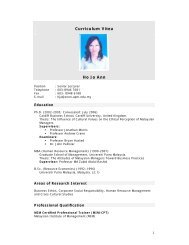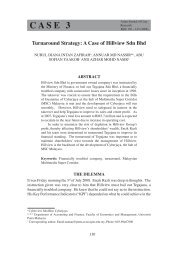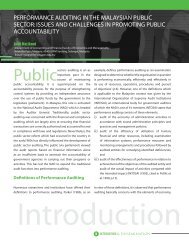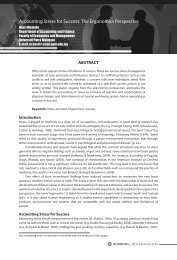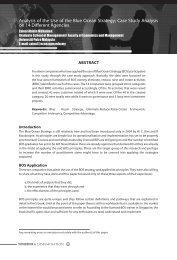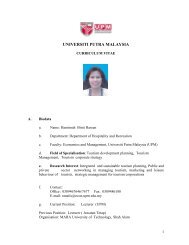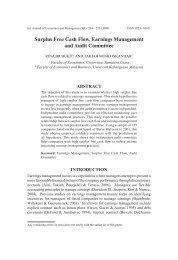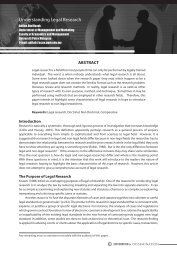Case 5 Mohani Abdul.pdf - Universiti Putra Malaysia
Case 5 Mohani Abdul.pdf - Universiti Putra Malaysia
Case 5 Mohani Abdul.pdf - Universiti Putra Malaysia
Create successful ePaper yourself
Turn your PDF publications into a flip-book with our unique Google optimized e-Paper software.
Asian Journal of <strong>Case</strong> Research (AJCR)compete with the road transport along the North-South Highway also lead toour losses. The Intercity Passenger Train Services recorded a decrease of 5.28%in revenue to RM68.35 million as compared with preceding year correspondingperiod revenue.”En. Mohd. Salleh, murmurred to himself, “I’ve been wondering if it is a goodmove for KTMB to continue with its programme of refurbishing the third classcoaches that ply to the East Coast.” Then the programme to construct electrifiedtracks between Ipoh and Rawang, linking the 2 major urban centres of Peninsular<strong>Malaysia</strong>, i.e - Kuala Lumpur and Ipoh, struck his mind. Electrified train serviceswould be operated between these 2 cities at better frequency and higher speeds.Travelling time is expected to be reduced to 2 hours based on a route speed of 160kmph. The new travel times and frequencies would make rail travel between KualaLumpur and Ipoh more economical, viable and practical. However, he wonderedwhether KTMB would be able to compete in the transportation market.En. Azman said confidently, “KTMB will continue its effort to turn railtravel as a preferred mode of public transportation. With the completion of theRawang-Ipoh Double Tracking Project, further improvement would be made onthe quality of services in terms of speed and reduced the travel time with smoothand comfortable journey. The provision of public amenities such as lengtheningof platforms, facilities for the disabled, additional seating facilities at stationsand directional signage will be our priority”. The passenger traffic statistics ofKTMB are shown in Appendix A.In facing the challenging circumstances, some measures have beenimplemented to enhance its operational efficiency and quality of customer service.Among the efforts that had been made were the improvements in the computerizedticketing and reservation system and the introduction of innovative reservationsystem via telephone, e-mail and website which is known as “e-Ticket”. The“e-Ticket” is an alternative method of purchasing train tickets via Internet,especially popular among tourists and students.Another important development of Intercity Passenger Services was theopening of the Sentral Station in Kuala Lumpur on 16 April 2001. The SentralStation is equipped with modern facilities and it is an integrated transportation hubin the city where the Express Rail links trains to KL International Airport (ERL),STAR Light Rail Transit, <strong>Putra</strong> Light Transit, KL Monorail, KTMB CommuterServices and KTMB Intercity Passenger Services Converge.The “Visit <strong>Malaysia</strong> Rail Pass” was relaunched in September 2002, toattract foreign tourists to travel by rail during their vacation in <strong>Malaysia</strong>. Severalpromotional activities were carried out throughout the country. Joint promotionsand strategic alliance with the players in the tourism industry such as touragencies and hotels were also held to promote rail services for travel to varioustourist destinations. One such joint venture was launched in September 2002between KTMB and Impiana Hotel, which operates a chain of hotels in <strong>Malaysia</strong>166


